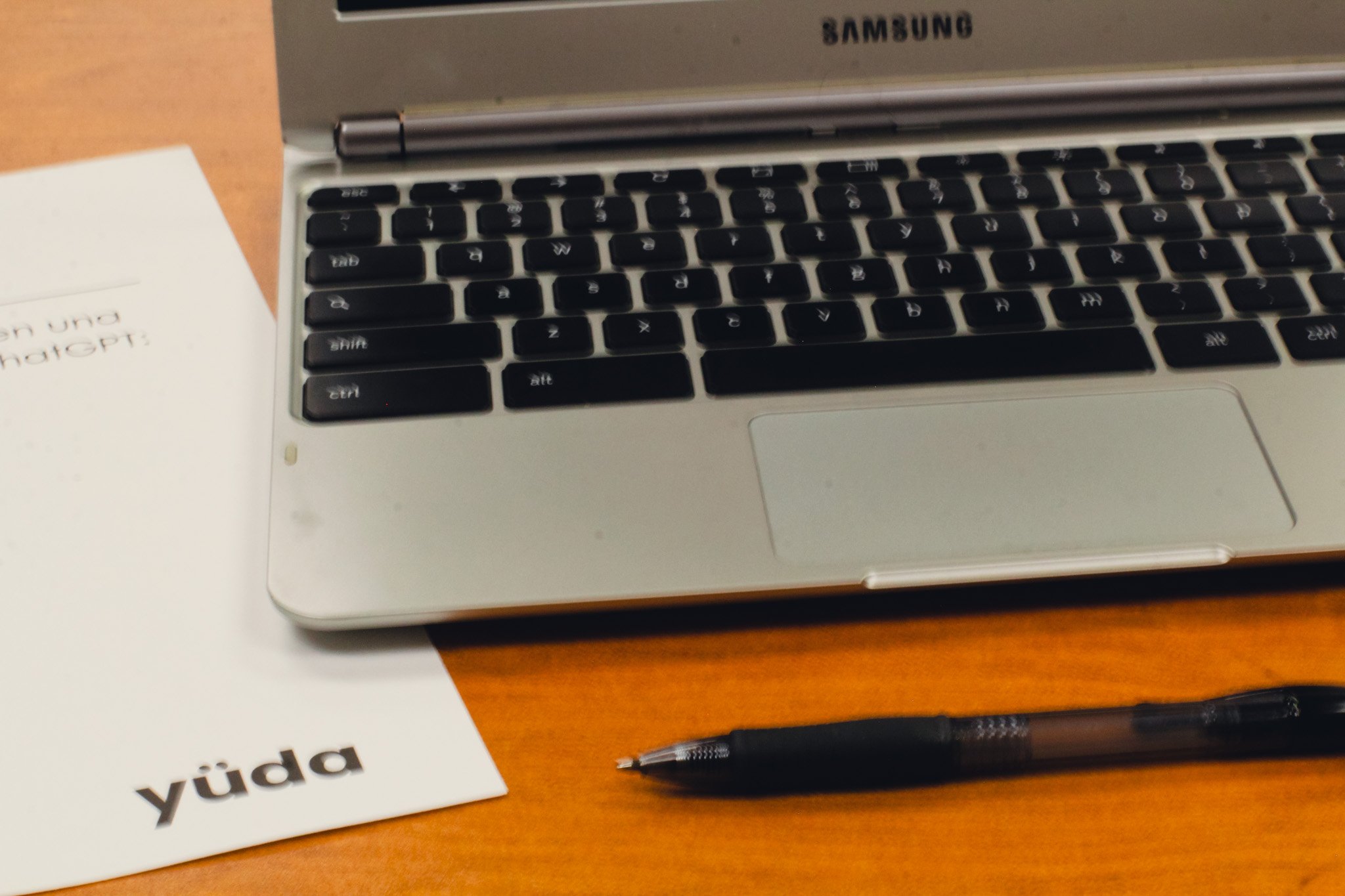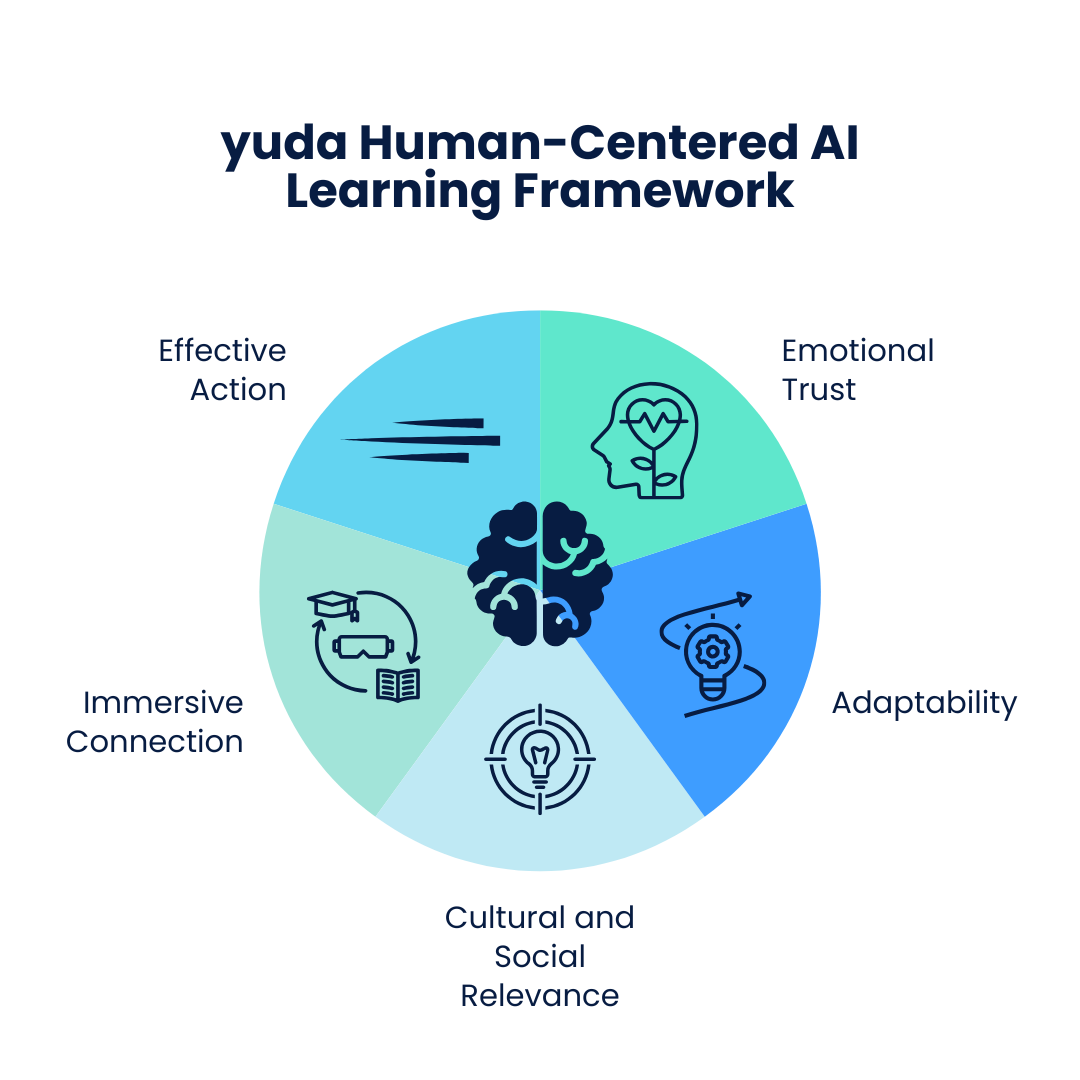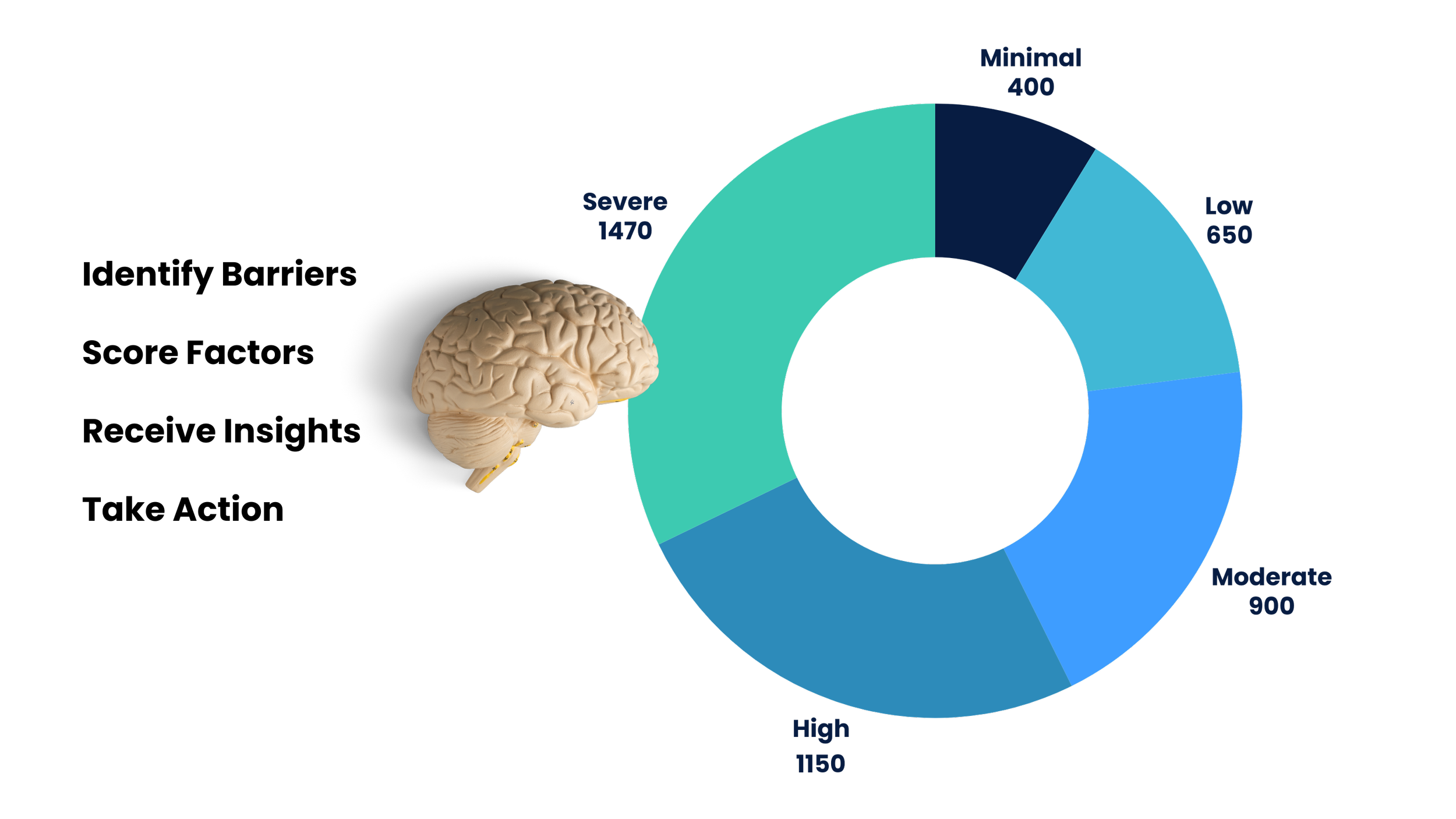
Empowering Inclusive Learning Through Innovation
Discover how yüda’s Learning Framework and Barrier Insight Tool are reshaping the future of learning for all.
The Learning Framework
-
Highlight how empathy, culturally responsive teaching, and AI-enhanced insights create safe, supportive environments.
-
Showcase differentiated instruction, AI-driven adaptability, and personalized pacing.
-
Emphasize connecting education to learners’ identities, languages, and societal contexts.
-
Introduce experiential learning and AI-driven simulations for impactful, memorable lessons.
-
Demonstrate how learners apply skills beyond the classroom to real-world scenarios.
Built on Proven Educational Theories
Our Learning Framework is built upon a robust foundation of time-tested educational theories and innovative approaches to ensure effective and inclusive learning. These theories guide our strategies, ensuring that learners are not only engaged but also supported in a manner that respects their individuality and potential. Below are the key principles driving our approach.
Situated Learning
Learning is most effective when it occurs in the context of real-world application.
Theory Summary: Situated learning emphasizes learning through authentic tasks embedded in social and cultural contexts.
Practical Application: Our framework encourages learners to engage in community-driven and experiential learning activities that mirror real-life challenges.
(Source: Northern Illinois University Center for Innovative Teaching and Learning)
How People Learn (HPL)
Understanding the interplay between prior knowledge, active engagement, and meaningful reflection.
Theory Summary: The HPL framework integrates cognitive science, neuroscience, and educational research to explore how individuals best acquire, retain, and apply knowledge.
Practical Application: We align learning content with students' existing knowledge and provide opportunities for active engagement and critical thinking.
(Source: Stanford HPL Introduction Chapter)
Maslow’s Hierarchy of Needs
Emotional and psychological safety are prerequisites for effective learning.
Theory Summary: Maslow’s framework posits that basic needs like safety and belonging must be met before individuals can achieve self-actualization and learning excellence.
Practical Application: Our approach ensures culturally responsive and inclusive environments where learners feel valued and respected, fostering a foundation for deeper engagement.
(Source: Maslow’s Hierarchy of Needs Overview)
Vygotsky’s Zone of Proximal Development (ZPD)
Optimal learning happens just beyond the learner’s current abilities with the right guidance.
Theory Summary: ZPD describes the gap between what a learner can do independently and what they can achieve with support (scaffolding).
Practical Application: Our tools and frameworks provide tailored guidance, leveraging AI to scaffold instruction at each learner’s developmental stage.
(Source: Vygotsky’s Scaffolding Techniques)
The Feynman Technique
Clarity comes from simplification and iterative refinement of knowledge.
Theory Summary: The Feynman Technique advocates learning by teaching—breaking down complex ideas into simple, understandable terms.
Practical Application: We incorporate storytelling and personalized narrative tools to empower learners to internalize and articulate their understanding effectively.
(Source: How to Use the Feynman Technique)

The Learning Barrier Insight Tool
Breaking Down Barriers to Learning
Using data-driven insights to identify individual challenges, generate personalized barrier scores, and recommend targeted solutions.
Our Learning Barrier Insight Tool is a data-driven innovation designed to identify and address the unique challenges faced by individuals in their learning journeys.
Here’s how it works: Each learner evaluates factors like emotional well-being, socioeconomic challenges, and access to resources, areas that often go overlooked. Our tool then generates a personalized "barrier score," combining the weight of each challenge with the individual’s experience. This allows us to tailor educational solutions, mentorship programs, and support systems to their needs.
Why it matters:
Personalized Solutions: Unlike one-size-fits-all approaches, we use this tool to meet learners where they are and empower them with tools they actually need.
Human-Centered Technology: By accounting for real-world challenges like mental health, time availability, or housing situations, we help remove obstacles that others overlook.
A Vision for Change: Our tool isn’t just about identifying barriers—it’s about building bridges to success in fields like AI, blockchain, and more.



